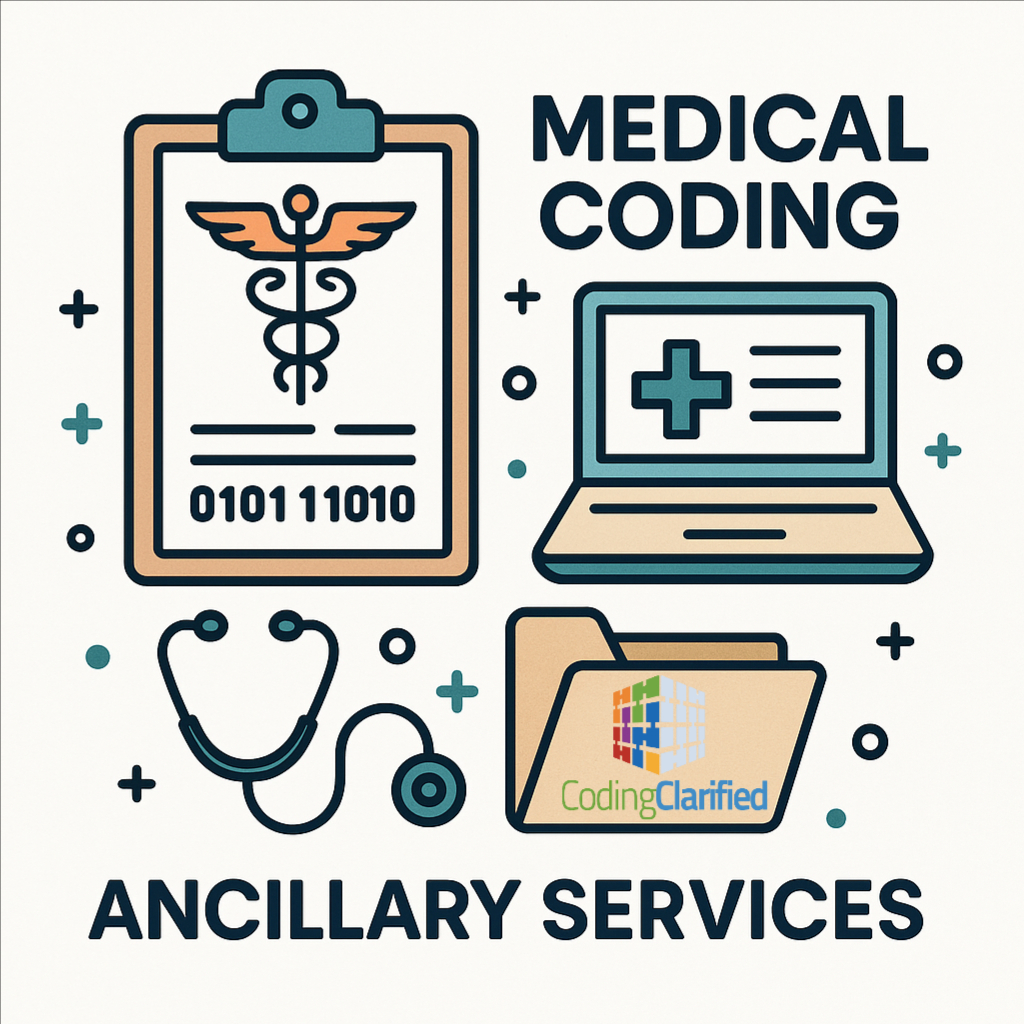Medical Coding and Ancillary Services: What You Need to Know
What Are Ancillary Services?
Ancillary services are specialized diagnostic, therapeutic, or support services provided to patients in addition to primary care. They are essential in today’s healthcare system, as they enhance diagnosis, treatment, and patient outcomes by supplementing physician-directed care. Ancillary services can take place in hospitals, outpatient clinics, or independent facilities.
Examples include:
-
Diagnostic services – Laboratory testing, radiology, pathology, and imaging (X-ray, MRI, CT scans).
-
Therapeutic services – Physical therapy, occupational therapy, speech therapy, respiratory therapy, and rehabilitation.
-
Support services – Pharmacy, nutrition counseling, home health, and durable medical equipment (DME).
Importance of Ancillary Services in Medical Coding
Accurate coding of ancillary services ensures proper reimbursement, compliance, and quality reporting. Since these services often generate additional revenue streams, correct documentation and coding are critical for healthcare providers.
Key considerations include:
-
Linking diagnoses and services: ICD-10-CM codes must justify the medical necessity for services billed.
-
Use of CPT® and HCPCS codes: Ancillary services often rely on highly specific CPT/HCPCS Level II codes to describe tests, therapies, or equipment.
-
Modifiers: Certain modifiers (e.g., 26, TC, RT, LT, or therapy modifiers like GN, GO, GP) are required to show professional vs. technical components or therapy type. CPT Modifiers and Anatomical Modifiers
Common Coding Challenges
-
Medical Necessity: Payers require the diagnosis code to support why a lab test, therapy, or supply was ordered. medical decision making
-
Bundling and Unbundling Rules: Some ancillary services are bundled into primary procedures; improper unbundling can lead to denials.
-
Frequency Limits: Many diagnostic and therapeutic services have payer-specific rules on how often they can be billed.
-
Documentation Gaps: Missing physician orders, therapy progress notes, or lab requisitions can cause claim rejections.
Compliance Considerations
Because ancillary services are often high-volume and high-cost, they are a frequent area of payer audits. Coders must ensure:
-
Documentation clearly supports each service provided.
-
Correct use of modifiers (e.g., TC vs. 26 for radiology). TC/26 Modifiers
-
Awareness of National Correct Coding Initiative (NCCI) edits to avoid improper billing combinations.
Tips for Coders Working with Ancillary Services
-
Always cross-check payer guidelines for coverage and medical necessity.
-
Verify if a service is globally billed or requires separation of technical/professional components.
-
Stay updated on HCPCS Level ll quarterly updates, since ancillary supplies and equipment codes frequently change.
-
Collaborate with clinical staff to ensure orders and documentation align with coding requirements.
Ancillary services play a vital role in patient care, but they also bring unique coding challenges. Coders must be meticulous in applying ICD-10-CM, CPT, and HCPCS codes, ensuring documentation supports the services rendered. Proper coding not only secures reimbursement but also contributes to accurate data reporting, which impacts healthcare quality measures and compliance.

